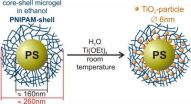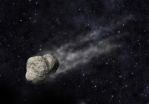(Press-News.org) Researchers at the University of Warwick and The Royal Marsden NHS Foundation Trust have completed a study that may lead to clinicians being able to more accurately predict which patients will suffer from the side effects of radiotherapy.
Gastrointestinal side effects are commonplace in radiotherapy patients and occasionally severe, yet there is no existing means of predicting which patients will suffer from them. The results of the pilot study, published in the journal Sensors, outline how the use of an electronic nose and a newer technology, FAIMS (Field Asymmetric Ion Mobility Spectrometry) might help identify those at higher risk.
Warwick Medical School, working in collaboration with the School of Engineering and The Royal Marsden NHS Foundation Trust (led by Dr J Andreyev), carried out a pilot study to look into the relationship between levels of toxicity in the gut and the likelihood of experiencing side effects.
Dr Ramesh Arasaradnam, of Warwick Medical School and Gastroenterologist at University Hospitals Coventry & Warwickshire, outlines the results of the study. "In the simplest terms, we believe that patterns in toxicity levels arise from differences in a patient's gut microflora. By using this technology we can analyse stool samples and sniff out the chemicals that are produced by these microflora to better predict the risk of side effects."
The success of the pilot study will lead to a broader investigation into the possible uses of these technologies and could be truly significant in helping clinicians inform patients receiving pelvic radiotherapy, before treatment is started.
Dr Arasaradnam explains what this could mean for radiotherapy patients, "In essence, we will be able to predict those who are likely to develop severe gut related side effects by the pattern of gut fermentation that are altered as a result of radiotherapy. This will enable future directed therapy in these high risk groups."
Dr James Covington, from the Warwick School of Engineering adds, "This technology offers considerable opportunities for the future. This shows just one application of being able to inform treatment by 'sniffing' patients. We foresee a time when such technology will become as routine a diagnostic test as checking blood pressure is today."
It is further evidence of the ongoing collaboration between Warwick Medical School and School of Engineering. This technology, first developed at Warwick in the early 1990s has been in continuous development ever since, producing some of the most sophisticated chemical sensors and sensor systems available today.
In 2009, the same high tech gas sensor was taken from the automotive world and used to research into quicker diagnosis for some gastrointestinal illnesses and metabolic diseases.
### END
Sniffing out the side effects of radiotherapy may soon be possible
2013-02-21
ELSE PRESS RELEASES FROM THIS DATE:
Titanium dioxide nanoreactor
2013-02-21
This press release is available in German.
Now, Dr. Katja Henzler and a team of chemists at the Helmholtz Centre Berlin have developed a synthesis to produce nanoparticles at room temperature in a polymer network. Their analysis, conducted at BESSY II, Berlin's synchrotron radiation source, has revealed the crystalline structure of the nanoparticles. This represents a major step forward in the usage of polymeric nanoreactors since, until recently, the nanoparticles had to be thoroughly heated to get them to crystallize. The last synthesis step can be spared due ...
Wanted: A life outside the workplace
2013-02-21
EAST LANSING, Mich. — A memo to employers: Just because your workers live alone doesn't mean they don't have lives beyond the office.
New research at Michigan State University suggests the growing number of workers who are single and without children have trouble finding the time or energy to participate in non-work interests, just like those with spouses and kids.
Workers struggling with work-life balance reported less satisfaction with their lives and jobs and more signs of anxiety and depression.
"People in the study repeatedly said I can take care of my job demands, ...
Research discovers gene mutation causing rare eye disease
2013-02-21
New Orleans, LA – Research conducted by Dr. Jayne S. Weiss, Professor and Chair of Ophthalmology at LSU Health Sciences Center New Orleans, and colleagues has discovered a new mutation in a gene that causes Schnyder corneal dystrophy (SCD.) The gene was found to be involved in vitamin K metabolism suggesting the possibility that vitamin K may eventually be found useful in its treatment. The findings are published in the February 2013 issue of the peer-reviewed journal, Human Mutation.
Schnyder corneal dystrophy is a rare hereditary eye disease that results in progressive ...
City layout key to predicting riots
2013-02-21
In the future police will be able to predict the spread of riots, and how they impact on cities, thanks to a new computer model.
Developed by researchers at UCL, the model highlights the importance of considering the layout of cities in order for police to suppress disorder as quickly as possible once a riot is in progress.
"As riots are rare events it is difficult to anticipate if and how they will evolve. Consequently, one of the main strategic issues that arose for the police during the 2011 London riots concerned when and where to deploy resources and how many ...
Rutgers neuroscientist sheds light on cause for 'chemo brain'
2013-02-21
It's not unusual for cancer patients being treated with chemotherapy to complain about not being able to think clearly, connect thoughts or concentrate on daily tasks. The complaint – often referred to as chemo-brain – is common. The scientific cause, however, has been difficult to pinpoint.
New research by Rutgers University behavioral neuroscientist Tracey Shors offers clues for this fog-like condition, medically known as chemotherapy-induced cognitive impairment. In a featured article published in the European Journal of Neuroscience, Shors and her colleagues argue ...
Mercury may have harbored an ancient magma ocean
2013-02-21
CAMBRIDGE, MA -- By analyzing Mercury's rocky surface, scientists have been able to partially reconstruct the planet's history over billions of years. Now, drawing upon the chemical composition of rock features on the planet's surface, scientists at MIT have proposed that Mercury may have harbored a large, roiling ocean of magma very early in its history, shortly after its formation about 4.5 billion years ago.
The scientists analyzed data gathered by MESSENGER (MErcury Surface, Space ENvironment, GEochemistry, and Ranging), a NASA probe that has orbited the planet since ...
Discovering the birth of an asteroid trail
2013-02-21
Unlike comets, asteroids are not characterised by exhibiting a trail, but there are now ten exceptions. Spanish researchers have observed one of these rare asteroids from the Gran Telescopio Canarias (Spain) and have discovered that something happened around the 1st July 2011 causing its trail to appear: maybe internal rupture or collision with another asteroid.
Ten asteroids have been located to date that at least at one moment have displayed a trail like that of comets. They are named main-belt comets (MBC) as they have a typical asteroidal orbit but display a trail ...
Activation of cortical type 2 cannabinoid receptors ameliorates ischemic brain injury
2013-02-21
Philadelphia, PA, February 21, 2013 – A new study published in the March issue of The American Journal of Pathology suggests that cortical type 2 cannabinoid (CB2) receptors might serve as potential therapeutic targets for cerebral ischemia.
Researchers found that the cannabinoid trans-caryophyllene (TC) protected brain cells from the effects of ischemia in both in vivo and in vitro animal models. In rats, post-ischemic treatment with TC decreased cerebral infarct size and edema. In cell cultures composed of rat cortical neurons and glia exposed to oxygen-glucose deprivation ...
Backs bear a heavy burden
2013-02-21
Trudging from place to place with heavy weights on our backs is an everyday reality, from schoolchildren toting textbooks in backpacks to firefighters and soldiers carrying occupational gear. Muscle and skeletal damage are very real concerns. Now Tel Aviv University researchers say that nerve damage, specifically to the nerves that travel through the neck and shoulders to animate our hands and fingers, is also a serious risk.
Prof. Amit Gefen of TAU's Department of Biomedical Engineering and Prof. Yoram Epstein of TAU's Sackler Faculty of Medicine, along with PhD student ...
Study reveals new clues to Epstein-Barr virus
2013-02-21
BOSTON -- Epstein-Barr virus (EBV) affects more than 90 percent of the population worldwide and was the first human virus found to be associated with cancer. Now, researchers from Beth Israel Deaconess Medical Center (BIDMC) have broadened the understanding of this widespread infection with their discovery of a second B-cell attachment receptor for EBV.
The new findings, which currently appear on-line in Cell Reports, reinforce current directions being taken in the development of a vaccine to guard against EBV, and raise important new questions regarding the virus's ...


